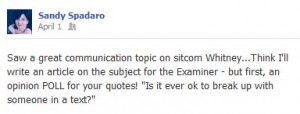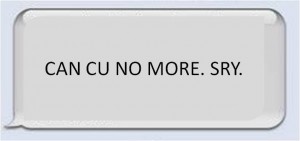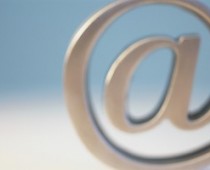The Modern Day Dear John: Telling of Character….or Telling of the Times?
I was watching a delightfully obnoxious sitcom the other night whose topic of interest was the inconsiderate break-up. Not just any break up, but the curt, impersonal, less-than-40-characters one…you got it, The Text Break-Up.
My mind immediately time-warped back to that episode of Sex in the City when Big broke up with Carrie on a post-it note. Ouch! Has this level of disrespectful communication actually become acceptable outside of TV humor and inside of our real lives? I decided to ask the masses. 
So off to Social Media I went, where I posted the question, “Is it ever ‘ok’ to break up with someone in a text?” For days I received a barrage of opinionated answers spanning from Facebook and Twitter to emails and…but of course, texts.
Here’s what the majority of responders feel about the subject:
We live in a modern era where time is sensitive and brevity in communication is honored. Beyond a generational thing, most people from pre-teens to housewives and from the small business entrepreneur to the Wall Street mogul prefer sending, reading and receiving messages using brief and direct methods including these we discuss here. We live in the tell-me-what-you-want-and-don’t-waste-my-time era. These practices are widely understood, accepted and generally cool…No Big D.
Until it becomes personal.
Most folks became a bit heated (and some downright enraged) when they gave my question some introspection. It seems there was initial agreement that there may be circumstances where, says one Facebook friend, “…courtesy may not be required,”…like “if you have a restraining order,” says another. In fact, there were a few reasons (from 10% of the responders) that felt YES, given the circumstances below; it is ‘ok’ to break-up with someone in a text.
- Neglect
- Abuse
- Stalking
- Adultery
- Pre-teen/Teenager
But what if none of those circumstances apply and you thought things were coming along nicely? You had a good rapport, perhaps even a relationship. What if there had been a considerable amount of time invested…is it THEN acceptable to give the Dear John message, out of the proverbial blue? 
These words were tossed about from the 90% whose impassioned response was of the “no way, no how – it’s never ‘ok’” opinion;
- Cowardly
- Immature
- Disrespectful
- Ill mannered
- Thoughtless
- Ignorant
To be super clear on the math, while 10% of the responders had been able to justify texting the demise of a relationship due to extenuating or unsafe conditions, only 1% of those had said [paraphrasing], “Eh, whatever.”
What’s the communication lesson in today’s story? We all accept that we want ‘quick and easy ‘, but when it comes to the human component of emotion, trust and love, most people still feel as if taking the time to have the actual conversation is worthy and respectful.
Communication is at the crux of our society, if we cannot effectively exchange positive messages, we find fewer successes along our path. Exercise thoughtfulness, compassion and consideration in each of the words you choose. If you know your message is going to be hurtful to someone, take the time to deliver it in person…or at the very least, on the phone.
90% of you think it’s “just the right thing to do.”








 The Writes and Wrongs of Email Messaging
The Writes and Wrongs of Email Messaging